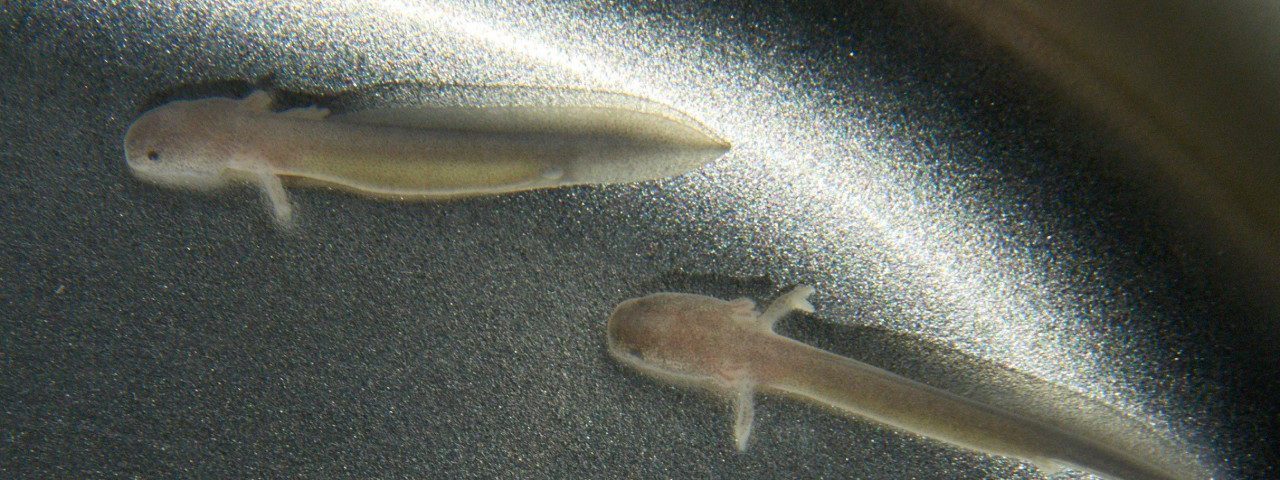At the begining of this summer we revealed to the public for the first time our most carefully guarded cave inhabitants. Four years after they hatched and caused quite a furore, we are proud to present three of the twenty-one baby olms (Proteus Anguinus), the world-famous ‘dragon’s offspring’, which we have all – and the media all over the world too – kept a close eye on since 2016. They have become veritable ‘celebrities’ and now it’s time for the public to meet them as well.
From now on visitors to Postojna Cave can go on another, brand new tour – we have named it ‘Meet the Baby Dragons’. As part of the experience, visitors will (currently) get to see three of the twenty-one baby olms that have been our ‘best kept and most carefully guarded secret’ since they had been living in a cave laboratory. Visitors will meet the baby dragons as part of a special VIP tour. In addition to the regular Postojna Cave tour route, visitors will learn all about the olms, which have been captivating people’s imagination since prehistoric times, get to meet the world-famous baby dragons and enter the parts of the cave that are otherwise closed to the public. The opening of a new tour aquarium with three baby olms marks a new milestone both for the olms and for Postojna Cave. For centuries, the cave has been considered the cradle of speleobiology and the world’s number one cave in terms of biodiversity.
When the lights go out…
No surprise there as no one has ever seen the olm’s reproduction in the natural habitat. In 2016, however, we witnessed a historic event taking place in Postojna Cave: one of our female olms laid sixty-four olm eggs in a large exhibition aquarium inside the cave. Later, twenty-one ‘baby dragons’ hatched from these eggs. According to the scientists’ statistical data, out of hundreds of eggs that a female olm is expected to lay in nature during her lifetime, a mere two embryos reach adulthood. We were not very hopeful, but we nevertheless tried our best. In the cave laboratory, which was set up after the last of the eggs was laid, we provided optimum artificial conditions for the development of eggs and hatchling at a later time. Despite a pessimistic forecast, we managed to provide excellent conditions for the growth of twenty-one baby olms. To put it in numbers, this means that we achieved a 92% survival rate and thus, according to experts, “created a one-of-a-kind laboratory in a completely natural environment, which constitutes an important step towards providing optimum artificial conditions for successful breeding of olms, which can greatly contribute to the preservation of this species in the future”.
The news about the baby dragons spread around the world
In the past years, Postojna Cave attracted the attention of all major global media and gained worldwide reputation. It is often presented as a synonym for and a symbol of the subterranean world, research and achievements, as well as baby dragons’ home. Ever since the first egg hatched, all the major media outlets reported about the baby dragons. All last but not least, they were also featured in the last big documentary with the legendary David Attenborough, Seven Worlds, One Planet.
Video of the first-ever opportunity to see baby-dragons: https://www.youtube.com/watch?v=7YSVYMCnlds&t=5s



OMG! I was there as a kid!
Would love to go there again